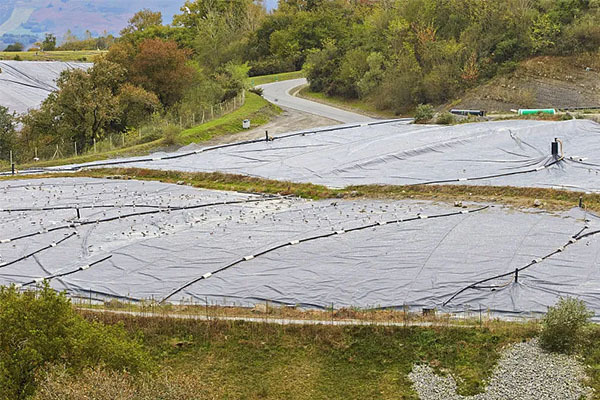Unlocking the Benefits of HDPE Geomembrane: A Comprehensive Guide
Release time:
2025-05-31
Discover the versatile applications and advantages of HDPE Geomembrane in various industries.
What is HDPE Geomembrane?
Alright, folks, let’s dive right into the world of HDPE Geomembrane! This high-density polyethylene liner is a game-changer in the realm of environmental protection and containment solutions. It's like the unsung hero of construction and waste management—trusty, reliable, and often taken for granted.
A Quick Overview
HDPE, or high-density polyethylene, is a type of plastic known for its remarkable strength and durability. When it comes to geomembranes, this material is molded into sheets that serve as barriers against liquids and gases. You could say it’s the fortress wall that keeps contaminants at bay!
Why Use HDPE Geomembrane?
Now, let’s cut to the chase—why should you consider using HDPE geomembrane? Here are some fantastic perks:
- Durability: This stuff can withstand extreme weather conditions, UV rays, and even chemical exposure. Talk about tough!
- Cost-Effectiveness: While the upfront cost may seem a bit steep, in the long run, its longevity saves you bucks on replacements and repairs.
- Environmental Protection: It’s a champion for preventing soil and water contamination. You can think of it as a superhero cape for your land!
Applications That Make a Difference
So where does this wonder material come into play? Buckle up, because the applications are vast:
- Landfills: HDPE geomembranes are a staple in landfill construction. They help contain leachate and prevent harmful substances from seeping into the ground.
- Ponds and Reservoirs: Need to line a pond or a water reservoir? This geomembrane seals the deal, ensuring no water escapes into the soil.
- Agricultural Applications: Farmers use HDPE geomembranes for irrigation systems and to manage water resources effectively.
Installation Insights
Alrighty, let’s talk turkey about installation. You might think it’s a walk in the park, but there are some key steps. First off, proper site preparation is crucial. Make sure the ground is level and free of sharp objects that could puncture the membrane. Then, you’ll want to lay down the geomembrane carefully, ensuring it fits snugly. Sealing the seams is a must for preventing leaks—think of it as zipping up a jacket.
Maintenance Matters
Don’t forget, even the toughest materials need a little TLC! Regular inspections for tears or punctures are essential to maintain the integrity of your HDPE geomembrane. It’s as simple as checking your car’s oil—just a bit of diligence goes a long way.
The Environmental Edge
Let’s not overlook the environmental benefits. Using HDPE geomembrane means keeping harmful substances contained, which is a win-win for everyone. The reduced risk of groundwater contamination is crucial for protecting ecosystems and public health. Plus, it supports sustainable practices—who doesn’t love that?
In Conclusion
To wrap it up, HDPE Geomembrane is more than just a sheet of plastic; it’s a technological marvel that plays a pivotal role in various industries. From landfills to agriculture, its applications are both diverse and impactful. So, the next time you hear about this material, you’ll know it’s not just another pretty face but a reliable player in safeguarding our environment.
So there you have it, folks! If you’re considering a project that requires containment solutions, remember to give HDPE geomembrane a good look. It might just be the solution you didn’t know you needed!






